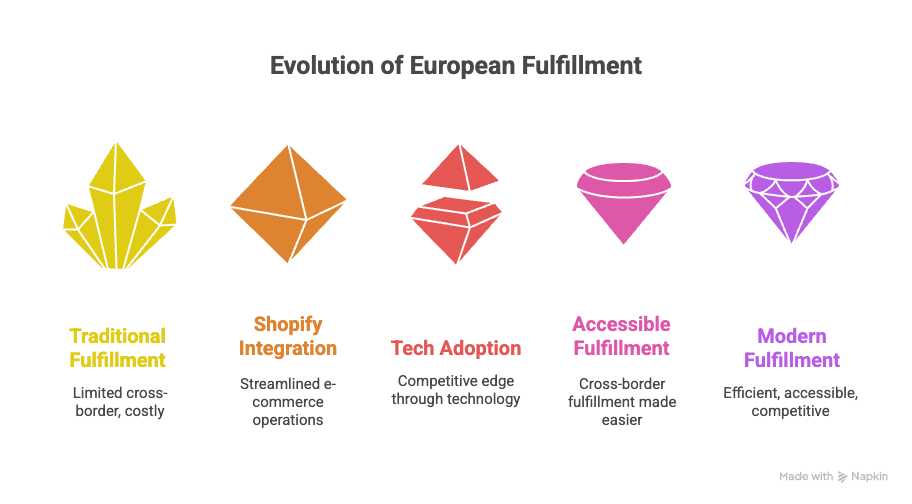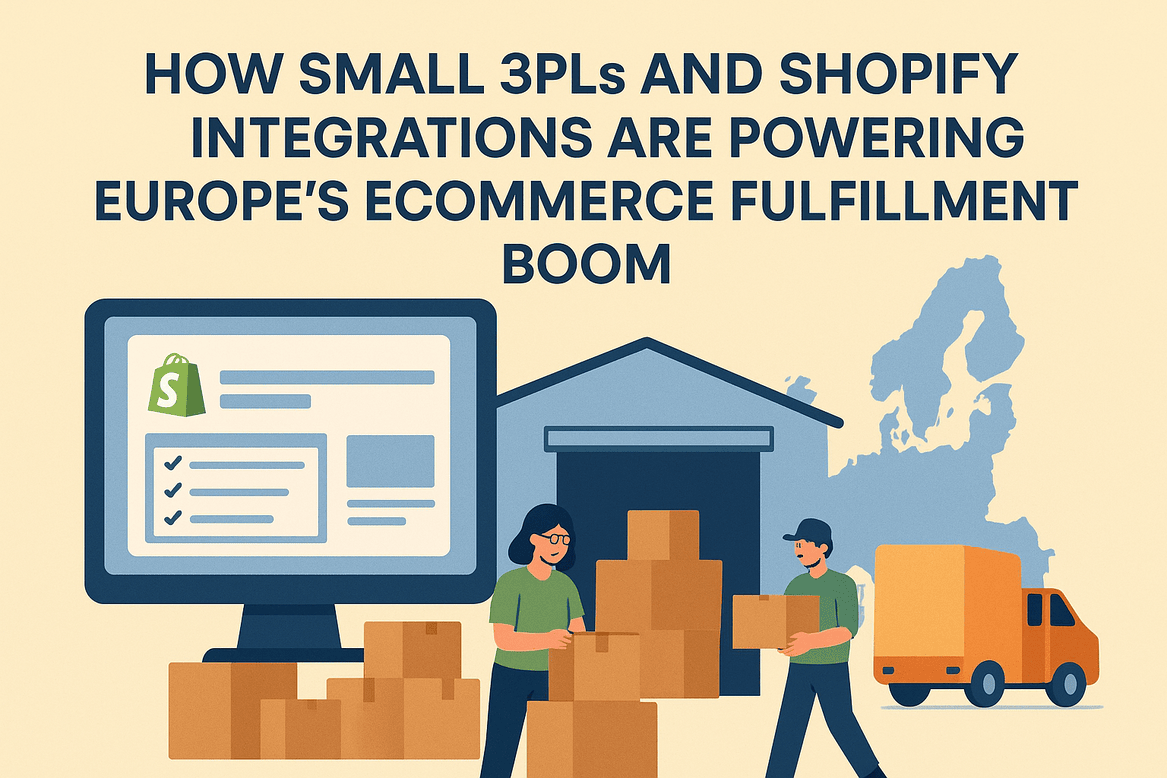Across Europe, eCommerce continues to evolve faster than most supply chains can keep up. Customers expect next-day delivery, smooth returns, and real-time tracking, yet many online stores still struggle to deliver that level of service efficiently.
What’s driving change now is not another giant warehouse network but a quiet shift toward smaller, tech-driven logistics providers. These small 3PLs (third-party logistics companies) are reshaping how eCommerce fulfillment works, offering flexible, digital solutions that fit the modern way of selling online.
The rise of small 3PLs in Europe
Ten years ago, European logistics was dominated by large operators with thousands of square meters of storage and heavy infrastructure. Their systems worked well for global brands but were often too rigid for startups or mid-sized eCommerce sellers.
Today, small 3PLs are filling that gap. They combine warehouse space with digital tools, offering storage, packing, and shipping that can scale up or down as demand changes. These smaller operators tend to specialize in specific markets or industries and are often faster to implement new technologies than their larger competitors.
In places like Estonia, Lithuania, and the Netherlands, small fulfillment centers are emerging as efficient hubs for cross-border trade within the EU. One example is TuEnvioYa, an Estonian-based company providing eCommerce fulfillment for growing brands across Europe. It represents a new generation of logistics providers that focus on flexibility, transparency, and seamless digital integration.

Why Shopify integration matters
Shopify is now one of the most common platforms for online stores in Europe. For many sellers, it is the backbone of their business, but fulfillment remains a pain point.
Without proper integration, store owners spend hours manually exporting orders, updating tracking numbers, or fixing inventory mismatches. That’s where modern 3PLs step in. They connect directly to Shopify, allowing data to move automatically between systems.
When an order is placed, the fulfillment center receives it instantly. Once the package ships, tracking information updates on the store without any manual input. This type of automation helps small teams maintain professional service levels and reduces operational mistakes that cost time and money. Findout more about shopify Integrate here.
Technology as a competitive edge
The new generation of 3PLs relies on cloud-based warehouse management systems and real-time analytics. Instead of relying on phone calls or email chains, store owners can log in to dashboards showing order status, shipment progress, and remaining inventory.
These digital workflows allow fulfillment centers in smaller regions of Europe to compete with much larger operators. They use data to optimize shipping routes, minimize storage time, and forecast demand more accurately.
Estonia, for example, has built a strong reputation for digital infrastructure. Many of its logistics companies use automation and API-based systems by default, which gives them a natural advantage in servicing tech-driven eCommerce clients.
Cross-border fulfillment becomes more accessible
One of the biggest challenges for European sellers is managing orders across multiple countries. Tax regulations, customs, and varying courier networks make logistics complex. Small 3PLs simplify this by operating inside the EU’s single market, allowing fast movement of goods without complicated paperwork.
Fulfillment centers in the Baltics, Central Europe, and Scandinavia often act as efficient distribution points for the rest of the continent. From a single location, they can reach key markets like Germany, France, and the Nordics within a few days.
This approach helps smaller brands remain competitive on delivery times without the overhead of maintaining multiple warehouses.
How the model benefits online stores
For eCommerce sellers, partnering with a smaller fulfillment center offers several practical advantages:
Flexible contracts and no strict minimums
Faster onboarding and integration with eCommerce platforms
Real-time visibility into stock and orders
Support teams that respond quickly and personally
It’s a logistics model built for companies that value agility and direct communication, the same qualities that often define successful online brands.
Europe’s fulfillment landscape is shifting
As eCommerce continues to expand, fulfillment is becoming a key factor in brand success. What used to be seen as a background process is now a source of competitive advantage.
The growing network of small 3PLs and integrated digital platforms is creating a more connected logistics ecosystem across Europe. Instead of being limited to major hubs, sellers can now choose from specialized partners in nearly every region.
For Shopify merchants and independent brands, this means more control, faster delivery, and a simpler way to grow beyond their home markets.
Looking ahead
The European fulfillment market is entering a new phase defined by adaptability and technology. Small 3PLs that integrate seamlessly with Shopify and other eCommerce tools will continue to shape how products move across borders.
Countries like Estonia are showing what the next generation of logistics looks like — efficient, transparent, and accessible for businesses of all sizes.
For Europe’s eCommerce industry, that shift could be transformative. Fulfillment is no longer just about storage and shipping; it’s about creating an infrastructure that helps online businesses move at the same speed as their customers.


